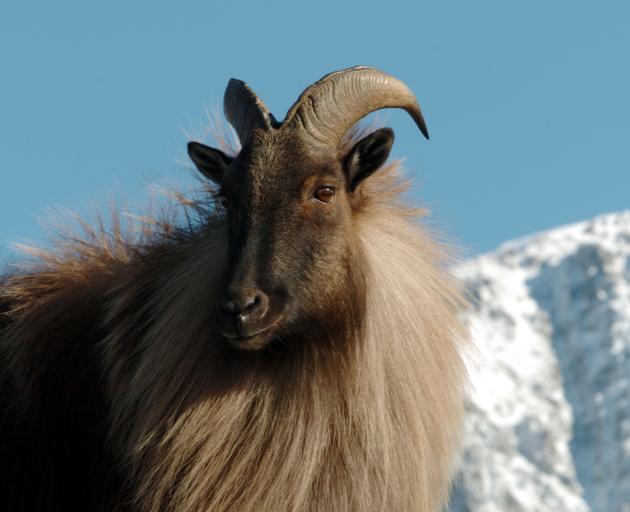
The Department of Conservation (Doc) said the large goat-like animals, introduced to New Zealand during the early days of European settlement, posed a threat to the country's native alpine plants.
To combat the loss of native vegetation, Doc said it had been working with ecological experts to start a new monitoring system.
The long-term control plan is led by Doc and Ngāi Tahu.
Doc tahr programme manager James Holborow said hunters could record the number of tahr culled through a new app called Tahr Returns.
Holborow said native alpine and sub-alpine plants such as snow tussocks and some distinctive and iconic megaherbs would benefit from a reduced tahr population.
"New Zealand's Kā Tiritiri o te Moana/Southern Alps are prized for their scenery, but we need to protect the environment and our native plants to keep it that way."
"Himalayan tahr eat a wide variety of plants, and while people have heard some, such as the world's largest buttercup - the Mount Cook buttercup, others like the scree buttercup, Ranunculus acraeus, are generally unknown but are as threatened as kea," he said.
"Tahr are social animals and can move in large groups browsing alpine herbs, tussocks and shrubs. They have a patchy effect across the landscape, but large groups of animals can transform tall tussocks and subalpine shrublands to a grassy turf or bare ground," Holborow said.
Doc ecologist Ingrid Gruner said a monitored vegetation plot within the Zora Canyon on the West Coast was a sobering example of what could happen when tahr build up in an area.
"Photos of this plot over 13 years show the decline in vegetation quality as tall snow tussocks disappear and are replaced by shorter grasses and herbs."
"It's heart-breaking to see the change over time. When we last visited the Zora Canyon, it more closely resembled a rough padDock than tall tussock grassland," she said.
"Tahr are a relatively heavy animal and when they mob together they compact the ground. Their trampling creates tracking, opens up the vegetation and exposes soils, potentially leading to erosion. Their urine and faeces act as fertiliser changing the nutrient status of the soils. All this can have profound and long-lasting effects on the local ecosystem," Gruner said.
Doc said hunters have recorded controlling about 12,000 tahr since last July.
At their peak, there were more than 35,000 of the animals in New Zealand.













